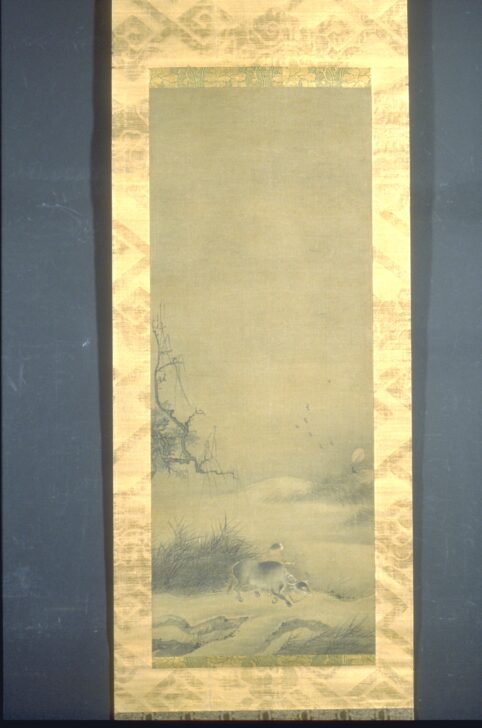Herdboy and Buffalo in the Moonlight
Chinese

Description
Oxherding themes became an important genre in Chinese painting in the Sung / Song Dynasty (967–1279). To Confucian scholars, the act of oxherding embodied a simple rural life, the very antithesis of political intrigue and the struggle for advancement at the imperial capital. Owning or exchanging such paintings could be a way for a bureaucrat to make a statement about his desire to retire from official life—or at least to assume that stance, which was also a claim to be disinterested in the material benefits of government service. To adherents of Chan / Ch’an (Japanese, Zen ëT) Buddhism, the ten stages of oxherding was a well-known simile for the path to enlightenment.
This beautiful hanging scroll, with its depiction of the carefree herdboy sauntering along beside his beast, lends itself readily to either school of thought. Even for the modern viewer, it has the power to inspire nostalgia for an idealized pastoral life.
Maribeth Graybill, Senior Curator of Asian Art
Exhibited in "Flora and Fauna in Chinese Art," April 6, 2002 - December 1, 2002.
Usage Rights:
If you are interested in using an image for a publication, please visit https://umma.umich.edu/request-image/ for more information and to fill out the online Image Rights and Reproductions Request Form.